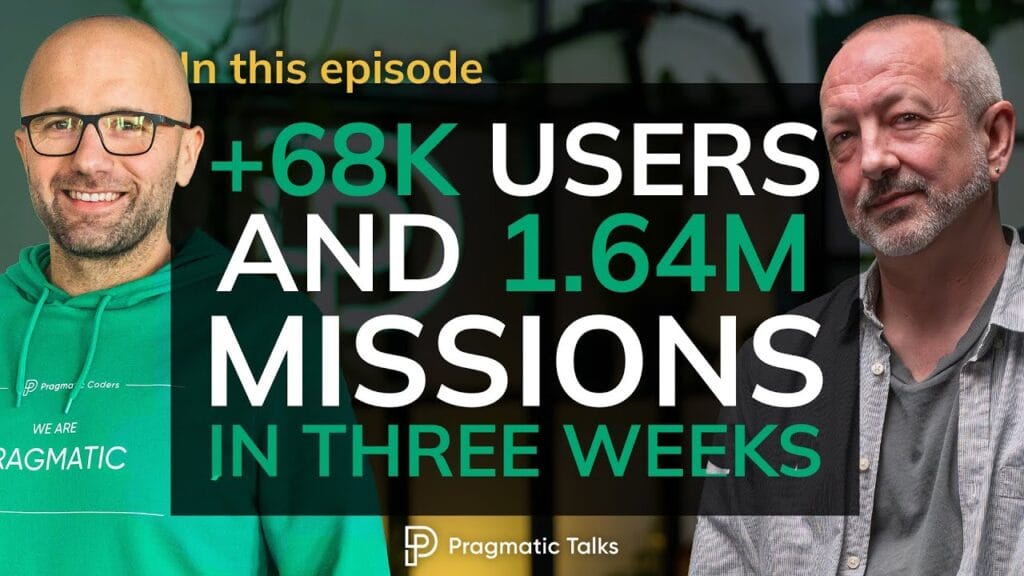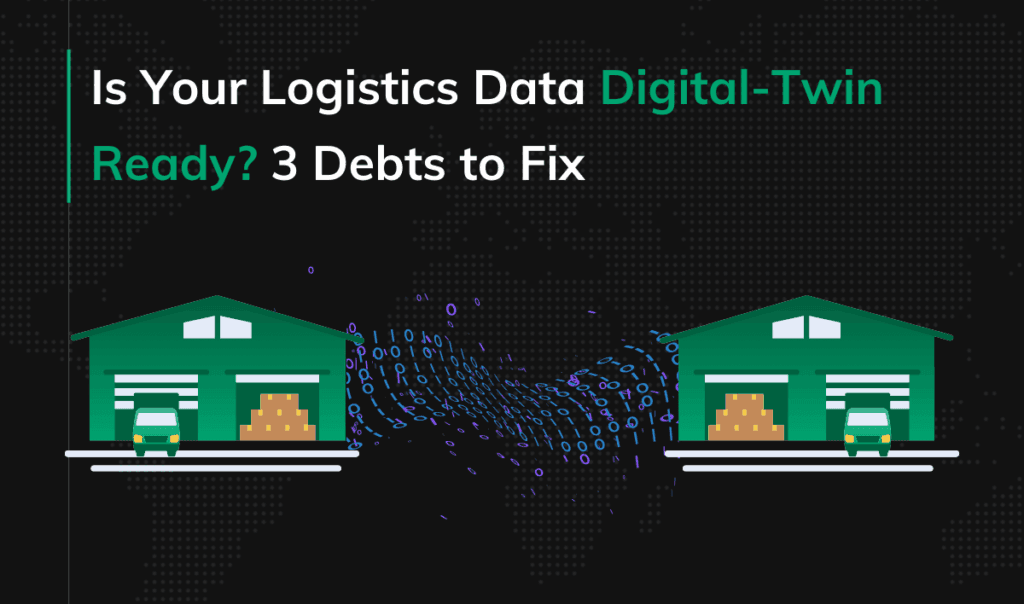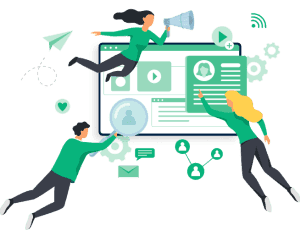Why accessibility is important for your business
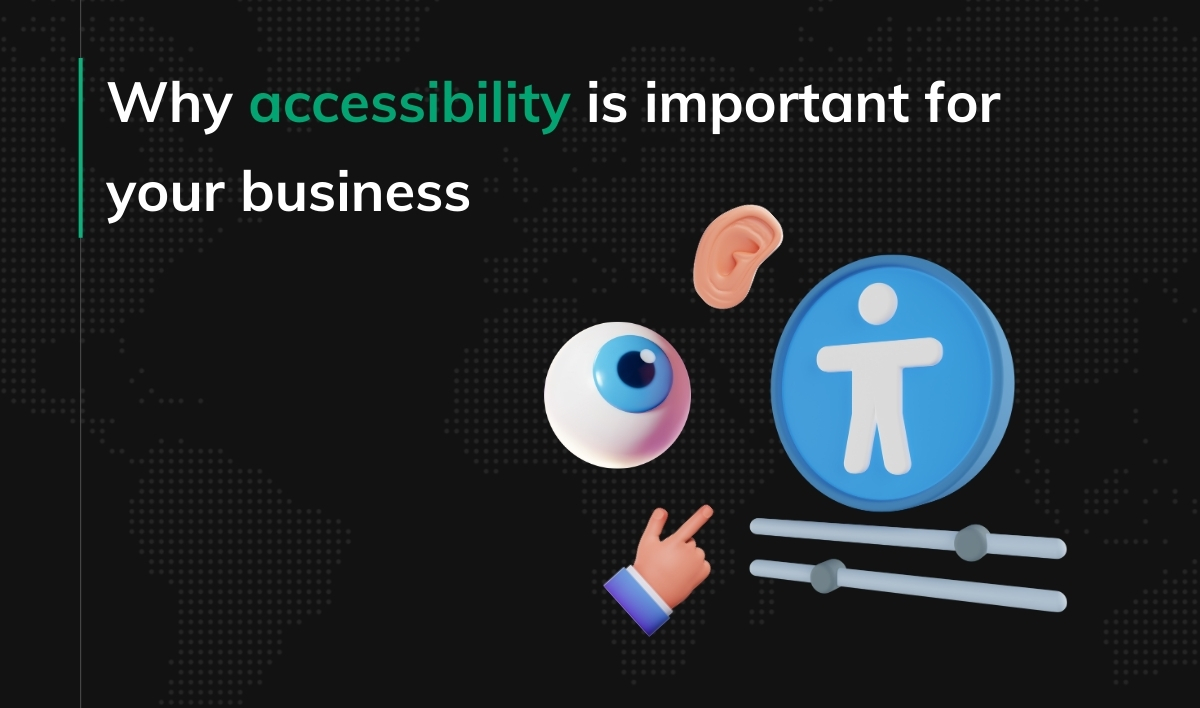
We live in an era where digital products surround us and are an integral part of our lives. In fact, we can hardly imagine functioning without them. Digital products are available everywhere and at our fingertips. But are they truly accessible to everyone?
Imagine your ideal app. It has features that make your life much easier, and you use it daily. There’s only one problem—some of its text is white on a white background. You cannot see crucial functionality simply because of how it’s designed. Does this example seem extreme? Perhaps it’s exaggerated, but what if I told you that similar usability challenges affect many people worldwide?
Accessible app design services
What is accessibility, anyway?
Accessibility in UX design is about creating digital experiences that everyone can use, regardless of their abilities or disabilities. Think of it as designing a ramp instead of just stairs. A ramp isn’t only for people with permanent disabilities—it also benefits those with temporary injuries, like a broken leg, and even people without disabilities. Accessibility is about inclusivity. It’s a way of saying, “Hey, we see you, and we want you to have a great experience too.”
What accessibility is not:
- It’s not about creating a separate, “special” version of your product just for people with disabilities.
- It’s not about sacrificing aesthetics or functionality.
- It’s not something that only benefits a small group of users.
- It’s not a trend—it’s a fundamental aspect of good design.
- It’s not as simple as adding an accessibility widget or overlay to your website and assuming it meets legal requirements. Many businesses have been sued because these tools often don’t fully address accessibility issues, especially if they’re not properly set up, maintained, or tested with real users
Why accessibility isn’t optional
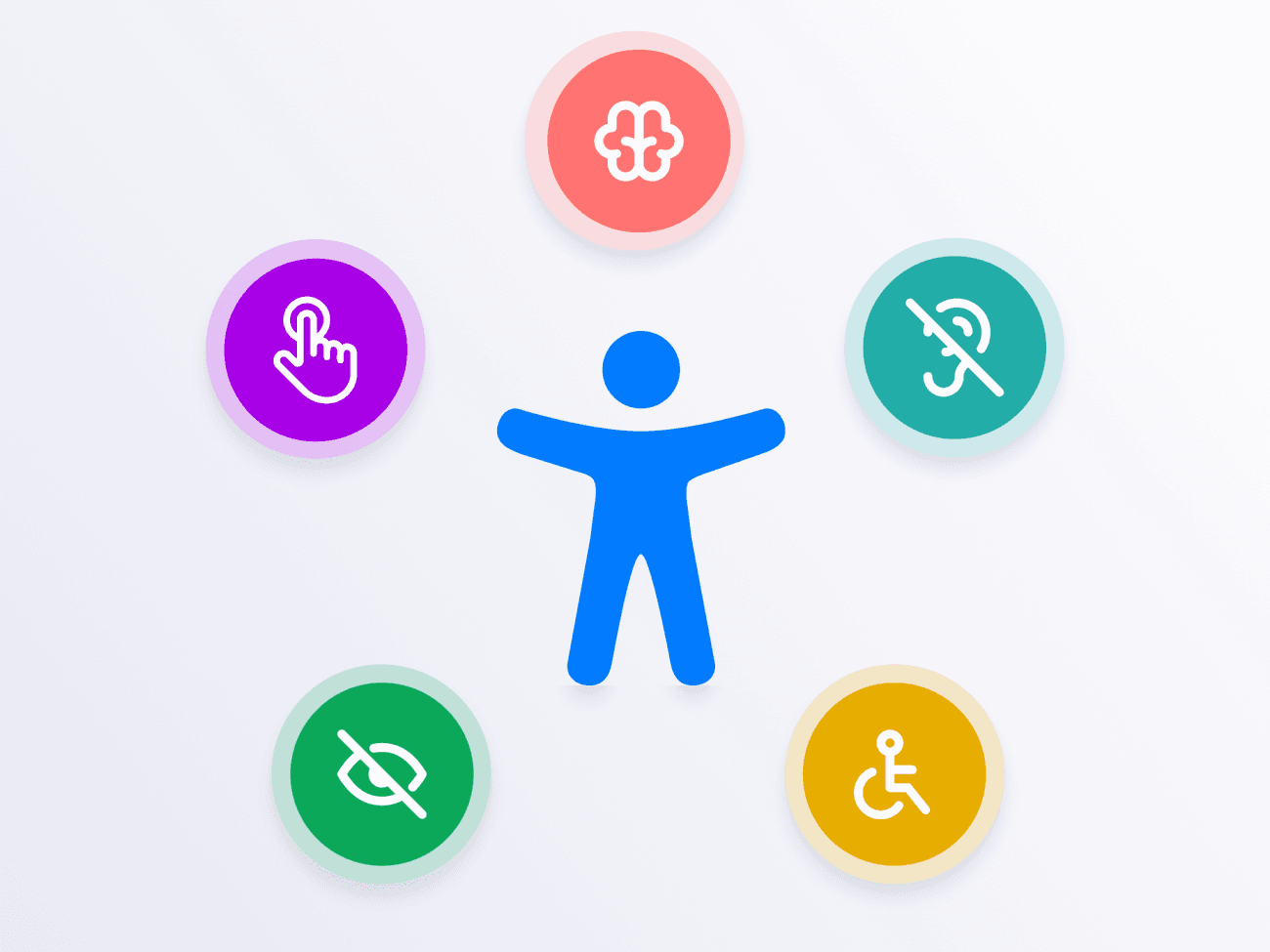
According to the WHO, 16% of the global population—about 1.3 billion people or 1 in 6 individuals—have some form of disability. Disabilities come in different forms: some are permanent, some are temporary, and others are situational. Recognizing this spectrum helps businesses design products that accommodate a wider range of users.
- More people can use your product or service.
- Users have a smoother, frustration-free experience (which leads to happier customers).
- Your business doesn’t accidentally exclude a huge potential audience.
Studies show that 75% of people with disabilities are willing to pay more for a product that meets accessibility standards. That’s a market of over 1 billion people—including their friends and families—who value accessibility.
Many accessibility improvements (like better contrast, clearer navigation, and voice search optimization) make digital experiences easier for everyone—not just those with disabilities.
Now, here is where things get serious. In many places, accessibility is required by law, making it more than just a design philosophy.
For instance, under the Americans with Disabilities Act (ADA), companies in the U.S. must ensure their digital information is accessible. The Department of Justice now requires state and municipal websites to meet WCAG AA standards.
Accessibility is just one of several critical UX areas where businesses slip up. To see the other common pitfalls, check out our guide on the 10 most impactful UX mistakes.
The rise in ADA-related lawsuits has made web accessibility compliance essential, especially for e-commerce and small businesses, which account for most cases. New York leads in accessibility lawsuits, with courts favoring plaintiffs, while many businesses mistakenly rely on ineffective accessibility widgets and overlays.
And if you think this is just an American regulation, think again. Many other nations have similar laws, including the European Union’s Web Accessibility Directive.
What happens if businesses ignore these laws?
Companies like Domino’s and Target have been sued for failing to provide accessible websites. For example, Domino’s was sued because a blind customer couldn’t use a screen reader to place an online pizza order. Spoiler alert—Domino’s lost.
If you don’t want to spend money on legal fees, accessibility should be a top priority.
Learn from the best: Apple
 Apple is frequently praised for its commitment to accessibility. Instead of treating accessibility as an afterthought, they seamlessly integrate it into their products. Features like VoiceOver (a screen reader), Switch Control (for users with limited mobility), and the Magnifier app empower all users.
Apple is frequently praised for its commitment to accessibility. Instead of treating accessibility as an afterthought, they seamlessly integrate it into their products. Features like VoiceOver (a screen reader), Switch Control (for users with limited mobility), and the Magnifier app empower all users.
For Apple, accessibility isn’t just about compliance—it’s about empowering everyone.
How to make accessibility a priority
It’s fantastic if you see real benefits for your company from accessibility. You might be wondering, though, where to begin. I suggest reviewing the Web Content Accessibility Guidelines (WCAG) if you have any issues concerning accessibility. This is a trustworthy and current source because it is a part of a set of web accessibility principles that were released by the World Wide Web Consortium’s Web Accessibility Initiative.
What functionalities should I implement, you ask yourself? Together, let’s make inclusivity an advantage.
Focus on high-impact changes first
Not every accessibility solution is made equally. Start with the adjustments that will benefit users and your company the most. Here’s what should come first:
- Keyboard navigation
Make sure that a keyboard alone can be used to explore your app or website. For people who are unable to operate a mouse, this is essential.- Business value: makes everything easier to use, even for power users who use shortcuts on the keyboard.
- Alt text for images
All photos should have informative alt text so that blind users may understand what they are seeing.- Business value: Improves SEO since search engines interpret photos using alt text.
- Color contrast and readability
Avoid using just color to communicate information; instead, use enough color contrast between the text and the background.- Business value: makes it simpler for everyone to view your material, particularly in low-light areas.
- Captions and transcripts
Provide transcripts and captions for audio and video information, respectively.- Business value: adds hearing impaired users and anyone who would rather read than watch to your audience.
- Forms and error messages
Yes, intelligibility is also an important part of accessibility. Make sure forms are simple to complete and offer unambiguous error messages that outline how to correct errors.- Business value: Boosts conversion rates and lessens user annoyance.
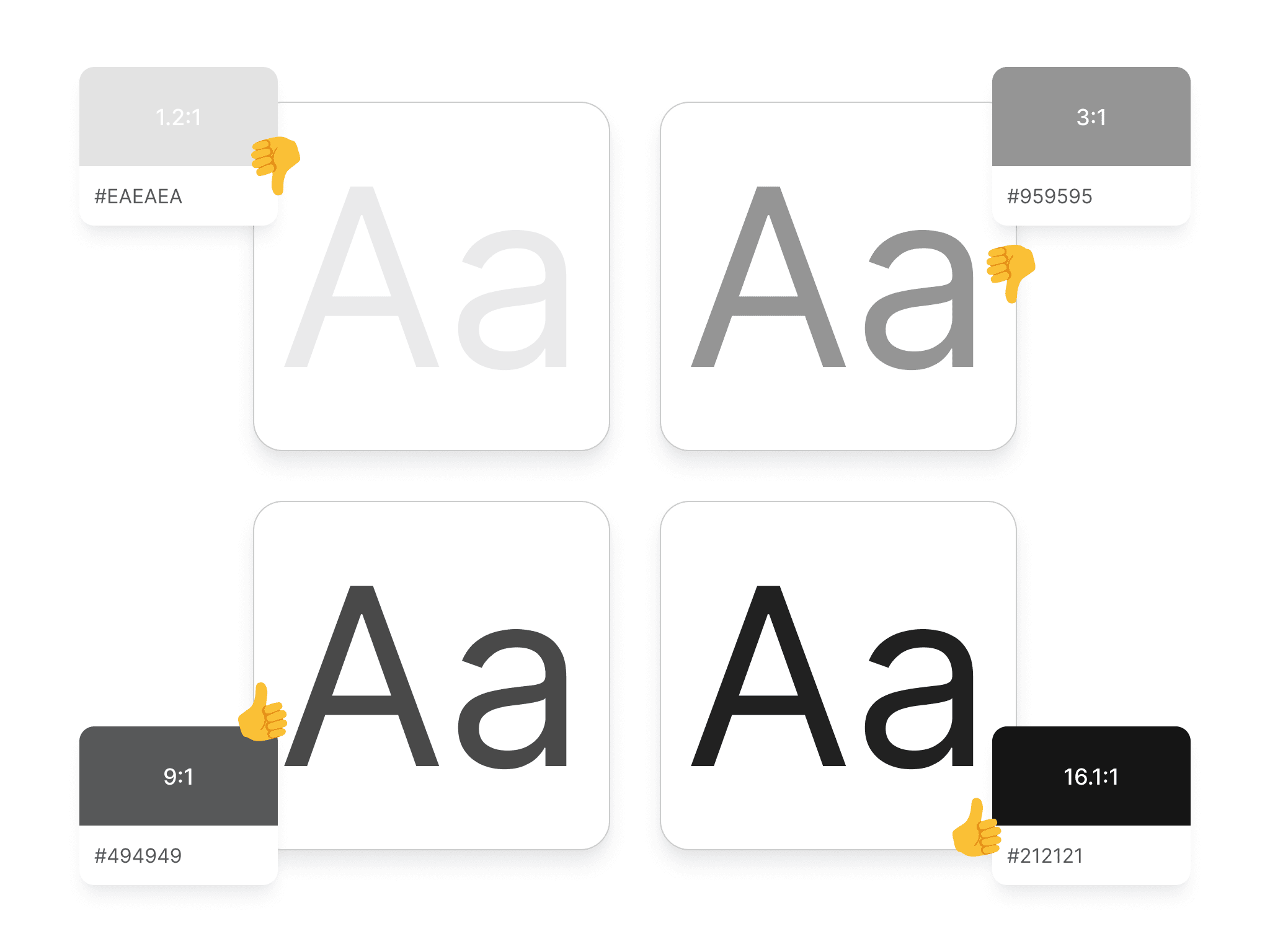
Are you unsure if your completed product complies with accessibility guidelines? The answer is simple. To find accessibility problems, start by analyzing your current digital assets (website, app, and software). You could:
- Use automated tools: Common problems like low color contrast or missing alt text can be swiftly identified with tools like WAVE, Axe, or Lighthouse.
- Hire experts: For a full evaluation, think about hiring accessibility consultants.
- Test with real users: To obtain personal input, include individuals with disabilities in usability testing.
A proper WCAG audit, including manual testing, is crucial, as automated tools detect only 30% of issues. Non-compliance can result in costly lawsuits, with settlements reaching hundreds of thousands of dollars.
But the simplest step, if you want to learn why accessibility is important and how it can work in real products, I invite you to watch an episode of Pragmatic Talks: Developing Accessible Software: Complication or Opportunity?
In this episode, you will learn:
- what accessibility is for
- why it is worth remembering
- how it can affect your business
Why does accessibility bring value for your business?
In addition to making your product more widely available and easier to obtain, you will also receive additional points in:
- Improved user experience
All users gain from accessible designs since they are frequently easier to use, cleaner, and more intuitive. Increased conversions, reduced bounce rates, and greater engagement are all indicators of happy users. - Expanded market reach
More than 1 billion individuals with disabilities, together with their friends and family, will be able to use your product if you make it accessible. That is a huge unexplored market. - SEO benefits
Clear headers and alt text are only two examples of accessibility techniques that raise your website’s search engine rankings. Increased organic traffic is a result of improved SEO. - Legal protection
Addressing accessibility proactively lowers the possibility of expensive legal action and harm to one’s reputation. - Brand loyalty
Businesses that put an emphasis on inclusivity gain the trust and loyalty of their clients. In a crowded market, it’s a potent differentiator.
Making your digital products accessible doesn’t have to be overwhelming. Start small, focus on high-impact changes, and integrate accessibility into your design process.
The benefits? Better SEO, reduced legal risks, increased revenue, and stronger brand loyalty.
In short, accessibility isn’t just good UX—it’s good business.





